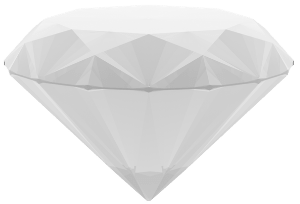Sapphire


Sapphire
The sapphire – from cornflower blue to the color of lotus flowers

gemstone. In fact, sapphires are especially sought after when they have a vibrant, medium-
light blue hue without a gray veil, reminiscent of the beautiful look of cornflowers. In
addition, the gemstone is also available in almost all other colors, except for the color red.
varieties referred to as rubies and all other colored ones as sapphires. Very exclusive is the
gemstone in the orangepink color of lotus flowers – in the technical language it is referred to with
the Indian word for this flower, Padparadscha. A characteristic feature of a sapphire is
pleochroism, which is expressed by the fact that the gemstone takes on different colors in
the eye of the beholder from different directions.
Sapphire
Sri Lanka and India – the sapphire and its most important deposits

which stand out for their extremely beautiful blue-violet color.
The sapphire – its purity and cut
sparkles enchantingly. An exception, however, are clouded gemstones, in which unusual
optical effects such as chatoyance or asterisms occur.
Sapphire
Individual sapphire jewelry

Sapphire
Overview

Naming
Sapphire means ‘blue’ in Greek – a meaning of the typical blue tones of sapphire. However,
sapphires are also available in other colors.
Mineral group
The sapphire belongs to the Korunde family, which contains some of the most precious gemstones.
Colour
The sapphire is most often found in a wide variety of shades of blue – from violet to cornflower blue to ink and black blue. That is why the name sapphire always refers to the blue sapphire without addition. Other color variants must be marked by name, e.B. green sapphire or yellow sapphire.
Polish
The sapphire unfolds its beauty best in the facet cut.
Particularities
The sapphire is also known as the gemstone of heaven and, together with the colorless diamond, the red ruby and the green emerald, forms the quartet of the most sought-after jewels.
Sapphire
Quality Factors

Especially the incidence of light plays a major role in the color or hue of a sapphire. Deviations of the blue sapphires range from colorless (i.e. white), yellow, green to an extraordinary orange or pink.
Purity also plays a role in the price. The most sought-after and therefore the most expensive is a
sapphire that is as transparent as possible with few inclusions.
1 carat (ct) corresponds to 0.2 grams – and indicates the weight of a gemstone. The higher the carat
number, the more valuable the sapphire. But it alone does not determine the value. Other factors
such as color, purity and cut play a major role.
For sapphires, the facet cut is mainly used, as this positively emphasizes the optical properties of the gemstone.
Sapphire
Pleochroism in sapphires

Pleochroism in sapphires
Sapphires sometimes have pleochroism. The gemstone appears in different colors at different
viewing angles. The gemstones usually look most beautiful in natural or fluorescent light.
Special sapphires
A sapphire that is as transparent as possible with few inclusions is usually the most valuable. It shows all its beauty and splendor best in the so-called facet cut.
Occurrence of sapphire
The most important sapphire deposits are mainly located in Sri Lanka, India, Myanmar and Thailand.
Sri Lankan sapphires usually fetate the highest prices on the jewelry market.
